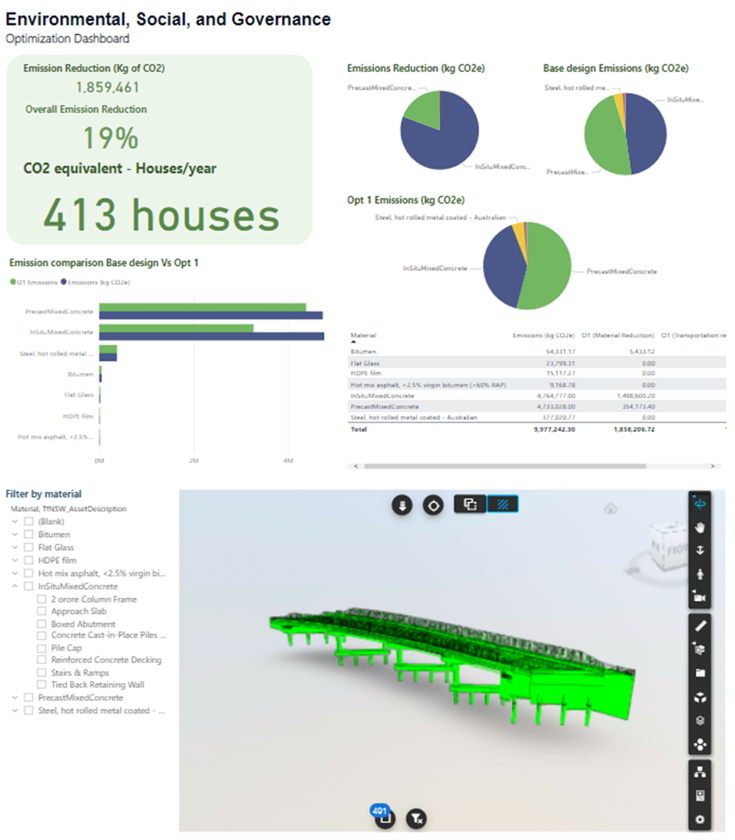DigitalGreenTwin: Leveraging Technology for Carbon Footprint Analysis
In today’s rapidly evolving market landscape, businesses across industries are facing new challenges, particularly in the construction sector. Environmental, Social, and Governance (ESG) considerations have become central to decision-making processes, influencing everything from investment strategies to consumer preferences. Within this context, the construction industry is under increasing pressure to minimise its environmental impact and adopt sustainable practices throughout the project lifecycle. As businesses strive to reduce their carbon footprint and meet net-zero goals, the need for innovative solutions that can streamline the analysis and optimization of environmental impact has become increasingly crucial.

The Role of Digital Engineering and Generative AI in the Digital Transformation Era
Digital engineering, combined with the power of generative AI, is driving a profound transformation in the construction industry. By leveraging advanced technologies such as Building Information Modelling (BIM), Artificial Intelligence (AI), and the Internet of Things (IoT), stakeholders can streamline workflows, improve collaboration, and enhance decision-making processes. Generative AI, in particular, offers a new dimension of capabilities by enabling the rapid exploration of design options, optimizing materials usage, and predicting environmental impacts with unparalleled accuracy.
Generative AI can analyze vast datasets and generate design alternatives that are not only structurally sound but also optimized for sustainability.
Furthermore, generative AI can be integrated with BIM to create dynamic digital twins that evolve as more data becomes available. These digital twins can simulate various scenarios, such as changes in energy usage patterns or material availability, allowing teams to adapt and refine their strategies in real-time. This ability to continuously optimize designs and processes through AI-driven insights fosters a culture of continuous improvement and innovation in sustainability practices.
Achieving Net-Zero Goals Through Technology and Generative AI
In the pursuit of achieving net-zero goals, a pivotal question looms large: How can we hope to improve carbon emissions unless we first measure and optimize them? Generative AI plays a critical role in this optimization. By simulating countless scenarios and providing data-driven recommendations, AI helps stakeholders make informed decisions that minimize environmental impact. For example, AI-driven energy modelling tools can predict the energy performance of a building under various conditions, helping to identify the most efficient HVAC configurations or the optimal placement of solar panels. This level of precision in design and planning is essential for reducing carbon emissions.
Moreover, generative AI can enhance the effectiveness of Life Cycle Assessment (LCA) by analysing the entire value chain with greater depth and accuracy. AI can identify patterns and correlations within the data that might be missed by traditional analysis methods, leading to more effective strategies for reducing both direct and indirect emissions.
By integrating generative AI with digital platforms and sustainability management software, organizations can not only track progress toward carbon reduction targets but also continuously optimize their efforts. AI-driven insights can highlight deviations from goals and suggest corrective actions, ensuring that carbon reduction remains a priority throughout the project lifecycle.
My Approach to Decarbonizing Projects and Achieving Sustainability Goals
In my work, I’ve developed a framework that focuses on decarbonizing projects and embedding sustainability and resilience into every stage of the project lifecycle. This approach is designed to help meet net-zero emissions goals and support long-term environmental stewardship.
One of the primary strategies I believe should be adopted is tailoring workflows for early-stage concept design to initiate emissions reduction right from a project’s outset. I believe that the potential for carbon reduction is greatest during the planning phase, remains significant during design, and gradually decreases through construction and into operation and maintenance. As planners and designers, we all should feel a strong sense of responsibility to maximize sustainability at every stage of a project.
To support this, I’ve developed a standardized data structure that feeds into a platform, focusing on optimizing project outcomes. This platform utilizes data from multiple models, regardless of the software used for modelling, ensuring a cohesive and efficient workflow.
Recognizing the potential for even greater optimization, I am currently experimenting with integrating generative AI into this platform. The use of generative AI could enable the rapid exploration of design alternatives, optimizing material usage, and predicting environmental impacts with a high degree of precision. This step holds the promise of enhancing the platform’s ability to deliver sustainable solutions tailored to each project’s unique requirements.
Ultimately, the final goal is to assist in meeting Environmental, Social, and Governance (ESG) objectives. I recognize that for projects to truly benefit the environment, it’s crucial to engage with the local community. To facilitate this, the platform I have created is user-friendly and directly communicates the results, specifically for non-professionals, such as community members and policymakers. Building this engagement is all about establishing trust, which can only be achieved through transparency. And transparency, in turn, relies on harnessing the power of real data.
The views and opinions expressed in this article are those of the author and do not necessarily reflect the official policy or position of my employer. The framework, technologies, and methodologies discussed are based on the author’s personal insights and experiences. This article is intended for informational purposes only and does not represent my employer's proprietary solutions or corporate strategies.

Christian Pallaria
"Success begins with a strategy. A strategic plan is your roadmap to achieving your destination."
